Qiscus bot esp8266
- 1. Qiscus bot for ESP8266 Qiscus ES /now Ashari Juang @2019 Wireless SoC (System on Chip)
- 2. ESP8266 ? ESP8266 dikembangkan developer tiongkok (Espressif). ? Module wi? dengan SoC (System on Chip). ? Bisa di program tanpa mikrokontroller tambahan. ? ESP12E NodeMCU v3 lua, board with gpio pin dan micro usb.
- 4. GPIO Pin ? Pin untuk komunikasi dengan sensor atau module lain ? beberapa pin konsisten mengeluarkan tegangan 3.3v dan ground. https://alselectro.wordpress.com/2017/10/21/nodemcu-getting-started-with-arduino-core-1-gpio-pins-network-access/
- 5. NodeMCU ?rmware ? Custom build ? Support mqtt client(connect, publish, subs, etc) ? Suport crypto (encrypt, decrypt, etc) ? Support sqlite but large size
- 6. Debug and Develop ? Arduino IDE ? Need update board model esp8266 ? Board con?g : ? cpu freq 80Mhz ? ?ash size 4mb ? upload speed 115200 ? port, follow your driver usb port(mac /dev/cu.wchusbserial... ? Serial monitor, and set serial port. example : 74880 and set 74880 baud on serial monitor
- 7. ESP8266 Qiscus ? Repo https://github.com/asharijuang/ESP8266-QiscusBot ? Main Feature : ? Con?g appid, token ? Get message with sync api (polling) ? Send message ? Integration with Arduino
- 8. Flow ESP8266 @hijuju NLP + state machine Qiscus Server Qiscus Client (kiwari) @hijuju or @juang ML
- 9. WIP ? Xiaomi dafang camera, telegram bot and motion detect. ? [TODO] Motion detect is late ? [TODO] Image Recognize ? NodeMCU and ESP8622 Qiscus Bot. ? [TODO] Try receive input sensor ? [TODO] integrate LCD ? IP Camera and image recognise with ESP32.

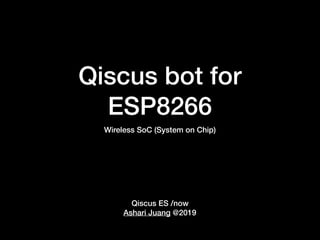
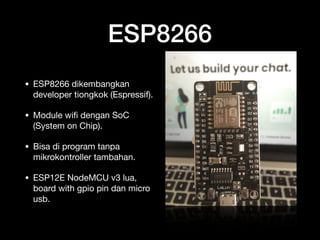
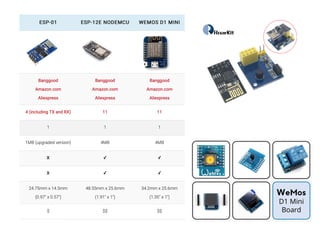
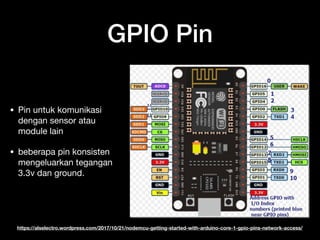
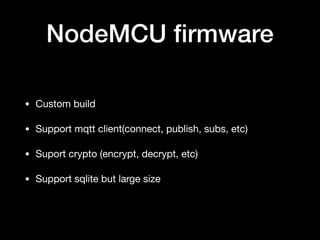
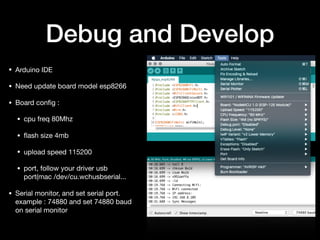
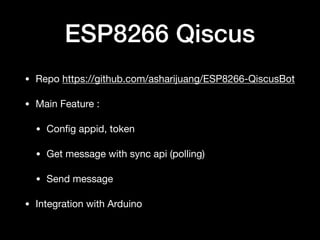
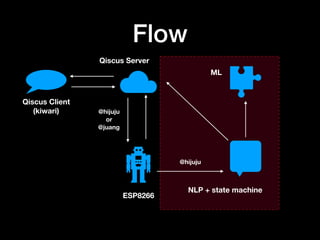
![WIP
? Xiaomi dafang camera, telegram
bot and motion detect.
? [TODO] Motion detect is late
? [TODO] Image Recognize
? NodeMCU and ESP8622 Qiscus
Bot.
? [TODO] Try receive input sensor
? [TODO] integrate LCD
? IP Camera and image recognise
with ESP32.](https://image.slidesharecdn.com/qiscusbotesp8266-190621024434/85/Qiscus-bot-esp8266-9-320.jpg)